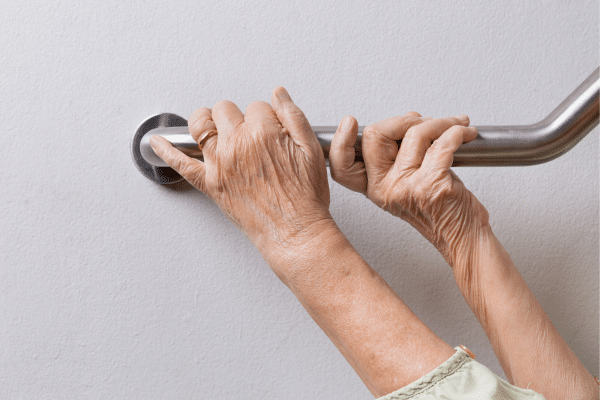Falls at home pose significant risks, especially for vulnerable populations like the elderly, children, or those with mobility concerns. Such incidents can lead to injuries ranging from minor bruises to severe fractures or, in unfortunate cases, even fatalities. Given the potential for harm, it’s vital to recognize the common causes of these accidents and adopt preventive measures. By making minor adjustments and being mindful, most home falls can be easily prevented. This post will guide you through some of the most effective strategies to ensure your living space is safer for everyone.
Clean Up Clutter
Clutter scattered around the house is a primary cause of many in-home accidents. Leaving objects like toys, shoes, or misplaced furniture in walking paths can become unexpected obstacles. Each year, numerous individuals find themselves tripping over these items, sometimes leading to serious injuries. It’s essential to make a habit of keeping floors and passageways clear. A simple practice of returning items to their designated spots immediately after use can greatly minimize the risk. Additionally, dedicating a few minutes each day to tidying up can have a long-term impact on ensuring a safer living environment.
Another aspect of decluttering goes beyond just physical objects. Loose wires or cables, particularly near entertainment areas or workstations, can also pose trip hazards. Ensure that cords are neatly bundled together, preferably with cable organizers, and placed out of the way. Also, consider investing in wireless gadgets when possible to reduce the number of cables around your home. The key is to create an environment where movement is unhindered, and potential obstacles are minimized.
Have Proper Lighting
One cannot stress enough the importance of adequate lighting when it comes to preventing falls. Many mishaps occur in poorly lit areas, where hazards are not easily visible. This is especially true in places like stairways, hallways, and basements. To prevent such incidents, ensure that all parts of the house, including corners and closets, are well-lit. If there are areas with insufficient built-in lighting, consider adding additional light fixtures or lamps.
Nighttime presents another set of challenges. Waking up for a glass of water or a trip to the restroom shouldn’t involve navigating a pitch-black home. Simple solutions like installing motion-activated nightlights can illuminate paths, reducing the risk of tripping over unseen objects. Furthermore, placing light switches within easy reach of entrances ensures that one doesn’t have to traverse a dark room just to turn on a light. Adopting these lighting practices can significantly decrease the chances of nighttime falls.
Stay Physically Active
Maintaining physical activity is paramount in ensuring good balance and strength, both of which are instrumental in preventing falls. Engaging in regular exercises can help improve muscle tone, joint flexibility, and overall stability. Activities like walking, yoga, or tai chi are particularly beneficial as they focus on enhancing balance and coordination. Such routines not only keep individuals fit but also make them more aware of their movements and surroundings, ultimately decreasing the likelihood of slips or trips.
Physical activity, however, should be approached with caution, especially for those who might not have been active for a while. Starting with low-impact exercises and gradually increasing intensity can help avoid muscle strains or injuries. It’s also beneficial to incorporate variety into workout routines to ensure all muscle groups are addressed. Whether one chooses to join a fitness class, hire a personal trainer, or self-learn from online resources, staying active remains a critical component of fall prevention.
Wear Shoes
Walking barefoot or merely in socks on certain surfaces can be risky, especially on tiles, hardwood floors, or other potentially slippery surfaces. Toes can get caught on rugs or carpets, and socks can lack the necessary grip, leading to unintended slips. Therefore, wearing appropriate footwear, even inside the home, can make a significant difference. Shoes with non-slip soles or indoor slippers designed for grip can provide the necessary traction, ensuring safer movement throughout the house.
That said, the choice of footwear is equally crucial. Ill-fitting shoes, high heels, or those in poor condition can become trip hazards themselves. Hence, it’s essential to choose shoes that fit well, provide adequate support, and are in good condition. Regularly checking the soles for signs of wear or damage can also help in timely replacements, ensuring consistent safety while walking or moving around.
Install Handrails and Grab Bars
Stairs, hallways, and bathrooms are some of the most common places where falls occur. In these areas, adding safety features like handrails and grab bars can offer invaluable support. In staircases, handrails can give individuals something to hold onto, making ascents and descents safer. They act as a guide and provide stability, especially when carrying items or navigating in dim light.
In contrast, bathrooms, with their wet surfaces, become prime areas for slips. Installing grab bars near the shower, bathtub, and toilet can provide the necessary support for individuals when they’re most vulnerable. These bars allow one to maintain balance while transitioning in and out of the bath or standing up from the toilet. Ensuring these installations are sturdy and correctly positioned is vital, as they need to bear weight and provide genuine assistance in preventing potential falls.
Regularly Review Medications
Certain medications have side effects that can increase the risk of falls. They might cause dizziness, drowsiness, or even impair balance, making daily activities potentially hazardous. It’s crucial for individuals to be aware of these effects, especially when starting a new medication. Taking the time to discuss potential side effects with a healthcare professional can provide clarity on what to expect and how to prepare.
Moreover, combining multiple medications can sometimes result in unanticipated interactions, intensifying these risks. Scheduled check-ins with a pharmacist or doctor can help monitor and manage such interactions. By understanding and being vigilant about the effects of medications, individuals can take proactive measures, like adjusting activity levels or seeking alternative treatments, to ensure safety at home.
Use Non-Slip Mats and Rugs
Flooring plays a pivotal role in preventing falls at home. Especially in areas that frequently get wet, like kitchens and bathrooms, the risk of slipping increases manifold. Using non-slip mats can offer the necessary grip, reducing this risk considerably. It’s essential to ensure that these mats are securely placed and do not slide around, which would negate their purpose.
On a related note, rugs and carpets around the home, if not properly secured, can become tripping hazards. Rugs that curl up at the edges or move easily should be fixed to the floor using double-sided tape or non-slip underlays. Regularly checking these fixtures and replacing worn-out or damaged ones can further enhance safety. When chosen and positioned thoughtfully, mats and rugs can beautify a space and simultaneously make it safer.
The Bottom Line
Ensuring safety at home is an ongoing process, demanding vigilance and a proactive approach. The strategies discussed in this post offer a comprehensive roadmap to mitigate the risks of falling. Implementing these measures can transform any living space into a haven of safety, where every resident, visitor, or guest can move confidently and without fear. As the saying goes, “Prevention is better than cure.” Taking these steps today can prevent potential mishaps tomorrow, safeguarding the well-being of all who call the place home.






